The following case presentation exemplifies the amazing smile transformation that can be accomplished with a minimally invasive approach. When there have been no other alternatives, I have achieved excellent aesthetic results with veneers. However, I feel that substantial improvements can be made without the need to drill the teeth, and avoiding the significant cost implications that a ceramic smile makeover usually involves. This alignment, bleaching and bonding case was completed in six months and, in my opinion, is a perfect example of how minimal intervention dentistry, can achieve optimum aesthetic results.
A 71-year-old patient came to see me at Start Smiling because she was unhappy with her crowded and chipped teeth (fig 1). She didn’t like the colour of her teeth or the dark lines around some of her old crowns and bridges (fig 2). She desperately wanted a full smile makeover, but didn’t want the ‘false’ look she had often seen when researching ceramic veneers.
Initial assessment
A thorough examination, including vitality testing, periodontal evaluation and radiographs was undertaken and a treatment plan developed. Orthodontic assessment revealed a class III posterior malocclusion on the right and left. There was mild upper and moderate lower anterior crowding. The patient’s dentition was heavily restored and the aesthetics of some of the restorations concerned her. In particular, she was conscious of the upper right bridge, which spanned from the canine to the upper right second premolar (fig 3). The patient was also unhappy with the look of the crown on the lower left first molar (fig 4).
Supra-gingival extrinsic staining was apparent, possibly due to the patient’s diet and green tea drinks. There was some evidence on the orthopantomogram radiograph of vertical bony defects (fig 5), which suggested a historical periodontal condition. However, the patient’s gingival health was very good, with no active periodontal disease. Her general oral hygiene was well maintained, but the lower anterior crowding made keeping the teeth clean a challenge. The upper central incisors were chipped incisally. The older metal-ceramic restorations had exposed margins because of normal, age-related, gingival recession and, possibly, some periodontal bone loss in the past. The diagnostic tests revealed no further abnormalities.
Treatment options
I showed the patient pictures and examples of all the types of dental treatment available to her, including orthodontics, implants, crowns, bridges and veneers – both ceramic and composite. We discussed the durability of each technique, long-term survival rates, and the differing hygiene and maintenance regimes necessary. The patient understood all of the risks and alternatives for each option. She was aware of the ongoing commitment to practise a high standard of oral health and to attend regular hygiene and dental visits.
It was important to the patient that the treatment conserved her characteristic smile and maintained an appearance appropriate for her age. She chose to have her upper and lower teeth aligned with fixed adult orthodontics before having the bridge and lower left crown replaced. The chipped incisal edges would be rebuilt, repaired and reshaped with composite material.
The patient understood that these techniques would involve maintenance and repair in the long term. She was also made aware of the need for ongoing monitoring of her occlusion. Although broader and more comprehensive treatment options were available, the minimally invasive approach satisfied both the patient’s limited budget, and her desire to achieve an improved smile without incurring further damage to her otherwise healthy teeth.
Orthodontics and bleaching
The patient was fitted with Cfast upper and lower fixed orthodontics for a period of five months to align her teeth (figs 6 and 7). At the same appointment, minimal inter-proximal reduction of 0.25mm per lower anterior and canine tooth was carried out. To retain her teeth post alignment, she was fitted with an upper fixed wire and lower Single visit Orthodontic Lingual and Invisible Dual (SOLID) retainer. Once all other treatment was completed, she was given removable retainers to wear at night. I believe that a second retainer is essential to guarantee the prevention of orthodontic relapse and to protect teeth and restorations from the possible consequences of night-time clenching and grinding.
The patient was given a course of overnight teeth whitening, using a combined regime of 10 per cent, followed by 16 per cent, carbamide peroxide, which improved her shade from C3 to A1. This was completed over a three-week period. During this time, a face-bow record was taken and a provisional diagnostic wax-up was made. This was used when later replacing her upper right bridge (teeth 13, 14 and 15) and her lower left crown (tooth 36). The bridge was replaced at the same time as the crown. I chose to use a zirconia framework bridge with advanced pressed ceramic. This material gives the necessary strength, but allows for beautiful and natural aesthetics. The new bridge and crown blend in perfectly with the natural dentition. Both restorations were placed with a resin cement using rubber dam to ensure perfect adhesion conditions.
The patient attended for a review of her smile. We discussed whether she intended to have further treatment, or if she was happy with the results. She decided that composite edge bonding of her anterior teeth would aesthetically improve her final smile.
Composite restoration
I used Kulzer Venus Pearl composite to reshape the incisal edges of the upper central teeth, the upper left lateral tooth, the upper left canine tooth and finally the lower right lateral incisor. The teeth were prepared by sandblasting the surfaces to create micro-abrasion of the enamel, which increases mechanical retention. The teeth were then washed with chlorhexidine to inhibit the matrix metalloproteinases released from any exposed and damaged dentine and enamel. These enzymes degrade collagen over time, which reduces the bond strength of resin-bonded materials. The teeth were etched with 37 per cent phosphoric acid and bonded with a two-stage technique. A microscope and rubber dam were used throughout treatment to ensure perfect marginal adaptation of the composite and bonding isolation.
Strong natural aesthetics
Alternate teeth were isolated from adjacent teeth with polytetrafluoroethylene tape before bonding. This technique enables very tight contacts to be formed and prevents the black triangles caused by using separator strips and wedges.
Venus Pearl was chosen to restore the anterior teeth incisal edges (figs 8 to 12) because of its inherent strength, the vast array of shades and the excellent natural aesthetics that can be obtained with a high polish. I used a blend of dentine and incisal shades, Opaque Light Chromatic (OLC), A1 and Clear Light (CL) to create the appropriate translucencies and natural aesthetics. Stains and flecks were added using tints, to create subtle nuances and invisibly blend the composite with the natural tooth. To add secondary and tertiary anatomy, the teeth were shaped with finishing burs and a three-step composite polishing system.
Clinical consistency in both the handling and the aesthetic properties of the Venus range make it my material of choice. If the restorations are well designed and the occlusion carefully considered, the material rarely fractures and the incisal edges of anterior teeth can be restored with confidence.
Protected healthy smile
The patient and I are exceptionally pleased with the final aesthetic outcome (fig 13). The cervical abfraction lesion on the upper left first premolar is the only missing restoration which impairs the end result (fig 14). The patient had decided to leave it until her next review visit.
The patient’s aim was to have a natural, healthy and age-appropriate smile, avoiding the artificial look that she had seen with some veneer-makeovers. The excellent aesthetic result was achieved without tooth loss or further damage to her natural teeth. All the previously chipped and damaged incisal surfaces are now protected.
The six-month review showed the durability of the aesthetics and revealed that the occlusion remained balanced (figs 15 to 17). Some mild tea staining was treated at the subsequent hygienist visit. The patient was extremely happy with her new smile and has received many compliments (fig 18).
Using adult fixed braces, ceramics and cosmetic composite bonding I was able to completely transform her smile with minimally invasive restorative and orthodontic techniques. This is the future of dentistry. We are so fortunate to be practising in an era when we have the material technology to be able to achieve this outcome without having to take a drill to a tooth.
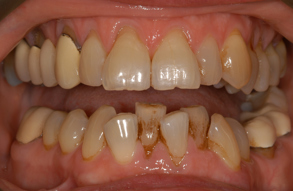
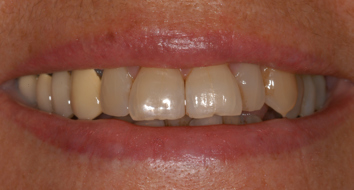
Fig 1: The patient was unhappy with her Fig 2: She didn’t like the colour of her teeth or the dark
crowded and chipped teeth. lines around some of her old crowns and bridges.
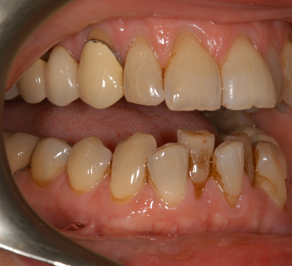
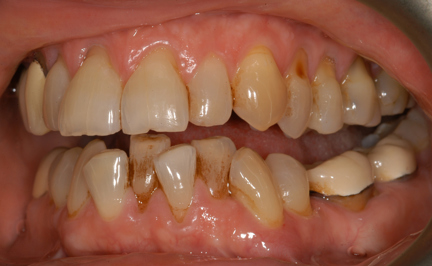
Fig 3: The patient was concerned with the Fig 4: The patient was also unhappy with the look of the crown on the
aesthetics of the upper right bridge. lower left first molar.
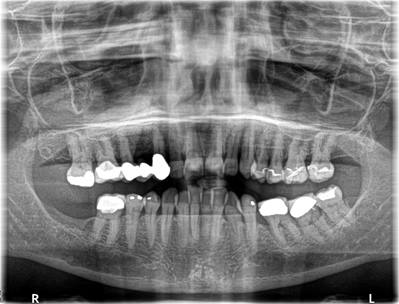
Fig 5: There was some evidence on the orthopantomogram
radiograph of vertical bony defects.
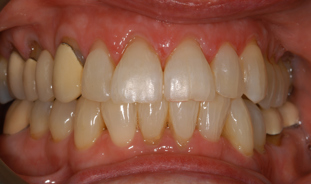
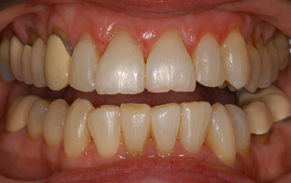
Figs 6 and 7: The patient was fitted with Cfast upper and lower fixed orthodontics for a period of
five months to align her teeth.
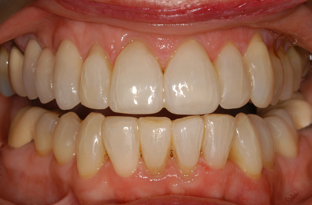
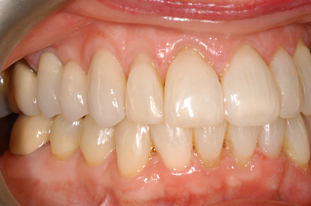
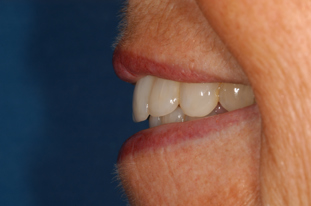
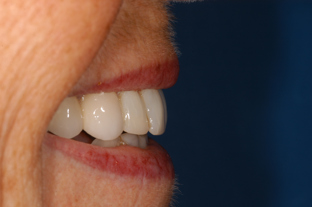
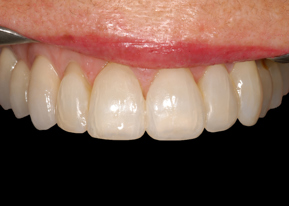
Figs 8-12: Venus Pearl composite was chosen to restore the anterior teeth incisal edges.
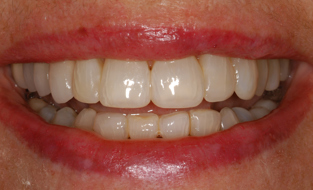
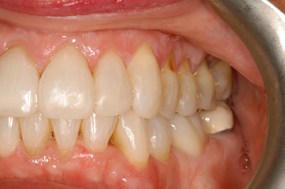
Fig 13: The patient and I are exceptionally Fig 14: The cervical abfraction lesion on the
pleased with the final aesthetic outcome. upper left first premolar is the only missing
restoration which impairs the end result.
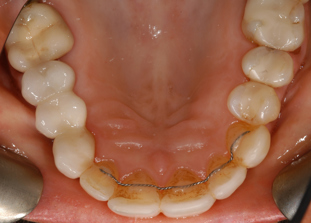
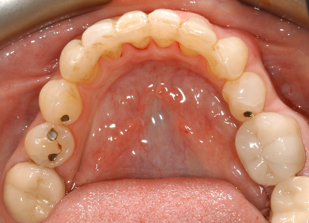
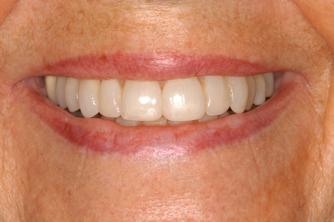
Figs 15-17: The six-month review showed the durability of the aesthetics and revealed that the occlusion remained balanced.

Fig 18: The patient was extremely happy with her new smile
and has received many compliments.

